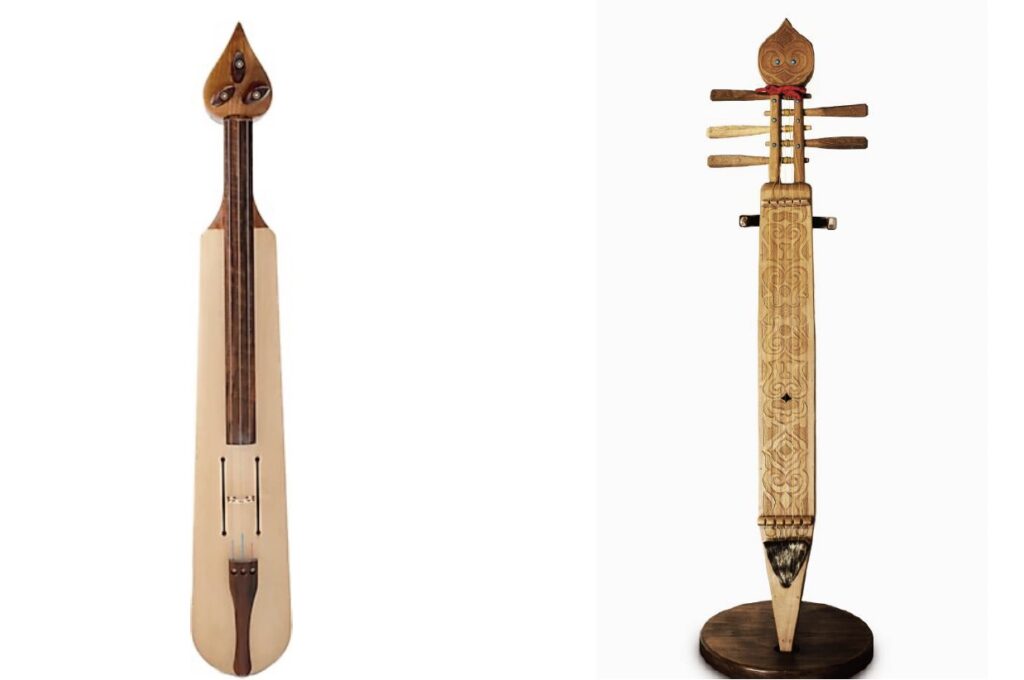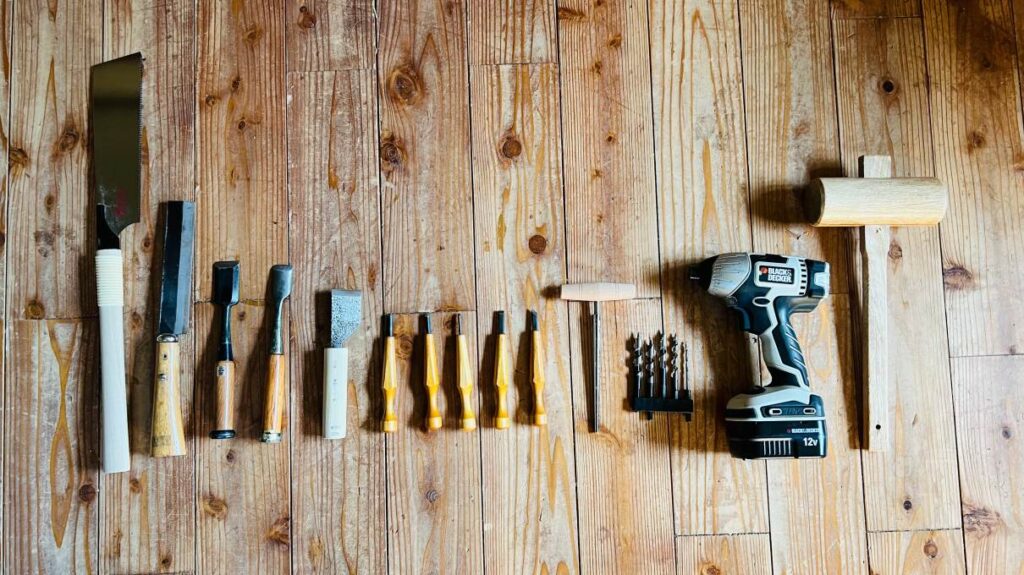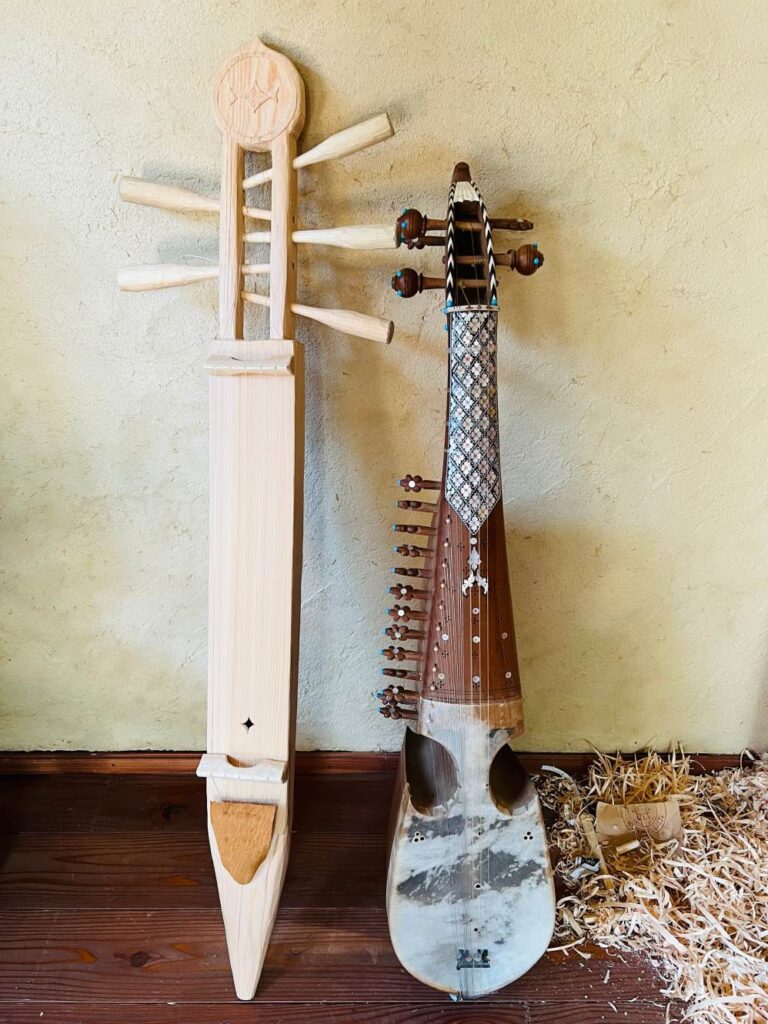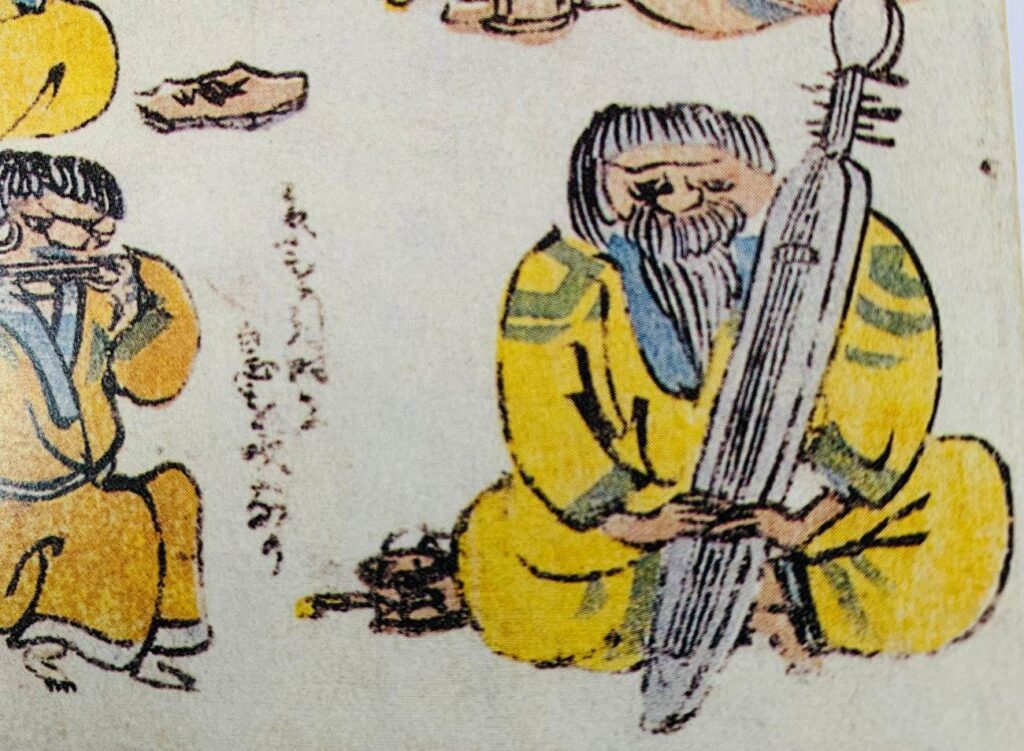Hello, I’m Takayuki Ueda playing, lute-style stringed instruments such as Rabab and lyra.
Have you ever heard of Tonkori, an Ainu instrument?
Tonkori is a simple 5-stringed koto with a clear sound, without the filter of Chinese civilization such as Shamisen or Biwa.
The Tonkori is a simple 5-stringed zither with a clear sound.
It was played by the Sakhalin Ainu.
In the past five years, through my research and performance of music from Central Asia and the Middle East.
I have been studying and performing music from Central Asia and the Middle East for the past five years, and from the standpoint of a performer of Eurasian folk instruments such as the Gejak and Lila, which are similar to the Tonkori.
I made up my mind to start a journey of making things, and immediately started to make a tonkori.
What lyra players have learned from making tonkori
- Tonkori is originated from a stringed instrument in Eurasia
- It can be made with surprisingly simple tools .
- The wonder of putting Tama(Spirit) in from the belly button
- Volume is very small.
- There used to be leather-bound tonkori.
Making a musical instrument involves a lot more time spent with the material than playing it.
There are many amazing discoveries to be made.
I’ll explain each of the five points above in a simple way.
Why Tonkori Roots in Eurasian Strings
This can be found in a paper by Tomohana Shinohara and Itsuji Tungiku of Hokkaido University
The tonkori is very similar to the long and thin stringed instrument of the Caucasus, the sychepsin.
It is very similar to the Greek-Turkish Black Sea Kemenche and the northern Pakistani Gejak that I play.

The shape of the head, the elongated body
The shape of the head, the long and slender body…
The Black Sea Kemenche is a stringed instrument that is played with a bow.
Tonkori is a finger plucked stringed instrument, so the technique is different.
As pointed out in the paper, this shape is much more stable when played with a bow, but it is thought that it became difficult to obtain horsehair, the raw material for bows in Sakhalin, and so the instrument was played with the fingers.
The charm of tonkori, which can be made with surprisingly simple tools

Here are the tools we used this time, from left to right
- sawtooth oak (
- Machetes
- Round only, Flat only
- Leather cutting knife
- Carving knife
- Reamer drill for cello (manual)
- Electric drill for drilling holes
- Wooden tongs
You might want to have a small knife called Ainu Makiri.
I used a machete and a bark cutting knife instead.
Instead of doing everything by hand, I left the rough drilling of the body to the woodworking shop. Even if you don’t have a power drill or something, you may be able to make a cleaner product if you drill the holes manually.
Thankfully, the Public Interest Ainu Association had a very detailed description of the procedure and tools.
I was able to refer to it. I really appreciate it.
The wonder of putting Tama(spirit) in from the belly button
The tonkori is based on a human motif, and each part can be compared to a head, neck, or foot. One of the features of the tonkori that I have never seen on any other instrument .
When the soundboard is glued to the body, a bead ball that resembles a tamashii, called a tama, is inserted to cover it.
Therefore, the hole in the belly button should be large enough to prevent the balls from rolling out.
to prevent the balls from rolling out.
The reason why Tonkori’s volume is so low is
The result of playing the tonkori
As a result of playing
As an ethnic instrumentalist, I have noticed something.
It is 。。。。
The volume is extremely low.
The low sound level can be an advantage in a living environment like a Japanese city, but even so, the volume of the tonkori is relatively low compared to other folk instruments. You might think that’s because it’s the first one you’ve made.
You might think so.
However, the other day, I saw a beautiful tonkori made by a professional tonkori maker, and the volume was still quite low compared to other stringed instruments. The possible reasons are
Hollowed-out instruments are less resonant than plate instruments.
That’s the point.
Musical instruments developed in modern times, such as guitars and violins
instruments, such as guitars and violins, are made of thin, uniformly thick boards laminated together.
Many folk instruments, such as the tonkori, lyra, and rabab, are made by hollowing out lumber.
It is also possible that the sound is less boxy and louder.
Still, there are many other stringed instruments that are less loud.
Both are delicate and have a very rich sound quality.
The problem is that they are not loud enough to play without a microphone.
So I came up with a solution.
To stretch the skin on a part of the body of a tonkori.
The Afghan rabab is a long and thin instrument like a tonkori.
It’s a long and thin instrument, but it’s not covered with skin all over the body.
It has both soundboard and skin.
So next time I will try to make a tonkori using this method.

By the way, the idea of putting skin on tonkori is not my original idea.
I did not come up with this idea on my own.
There is an interview here.
In this interview, he said that there used to be tonkori with skin.
If you think about it.
Making a thin board.
and sawing boards of uniform thickness.
without power tools.
I asked a lumber dealer to help me with this process.
In the past, in Sakhalin and Hokkaido, it was more rational to use untanned animal skins than to make thin boards.
I think it was more rational to use untanned animal skins than to make thin boards.
summary
So.
I have been playing the stringed instruments of Central Asia and the Middle East for more than five years.
for more than 5 years.
As a result of making a tonkori, I found out
Next, a leather-bound tonkori.
I’m going to try to make a tonkori with skin and sound board on the body like the rabab of Afghanistan.
I will try to make a tonkori with leather and soundboard on the body like Afghanistan’s rabab.
